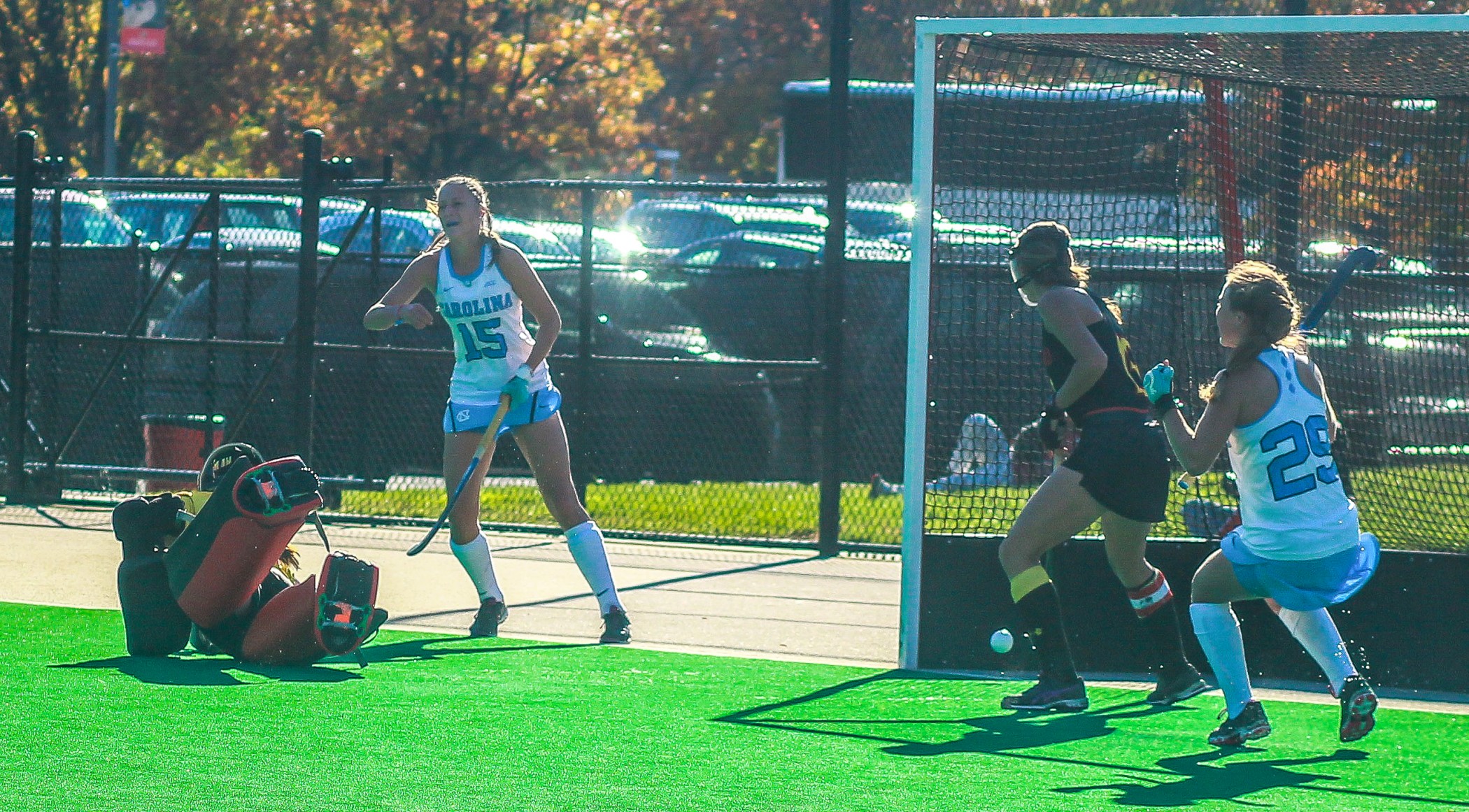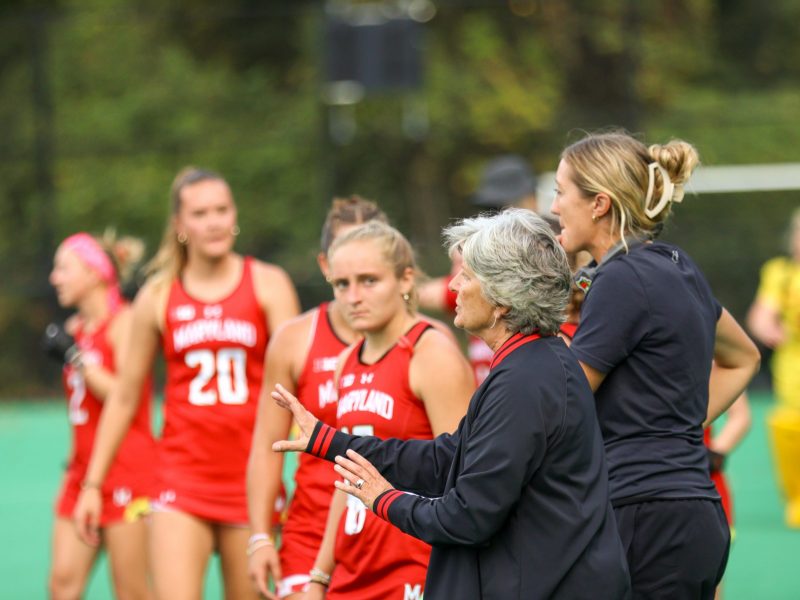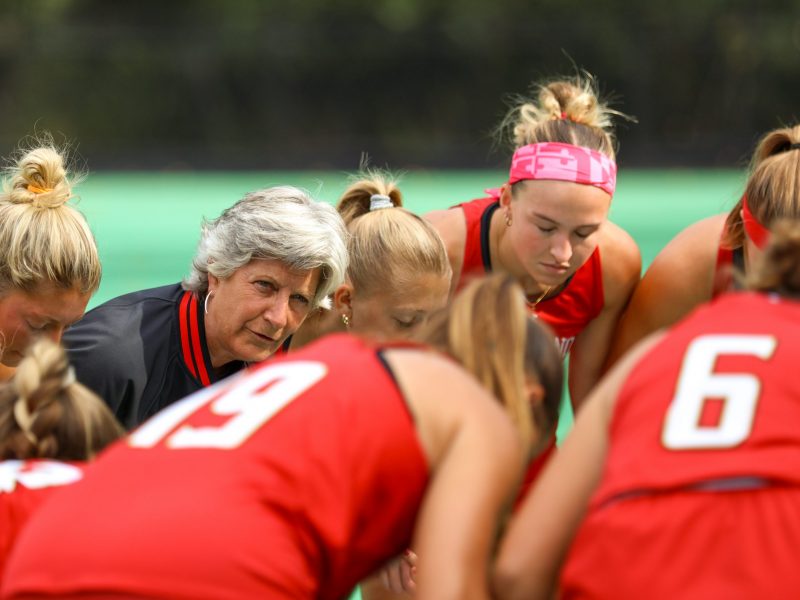As the Maryland field hockey team huddled after practice Oct. 19, midfielder Lein Holsboer stepped up and spoke to her teammates.
“Right now, I believe in this team,” she said. “I believe we can win every match.”
Her words struck a chord with coach Missy Meharg. It was the first time one of the team’s leaders had shown that level of confidence in the group. She felt it was a sign that Maryland was in “the best preparatory” state it could be in.
After some early-season struggles, the young Terps squad appeared to find its groove. Maryland clinched a share of the Big Ten regular-season title with a road win at No. 5 Penn State. A week later, they knocked off undefeated Connecticut for a sixth consecutive victory. That stretch was the highlight of the season.
Despite some impressive wins and a Big Ten regular-season title, the team came up short of raising a trophy in November, falling in the Big Ten tournament championship and the NCAA tournament quarterfinals.
“We all know about the sting of sport,” Meharg said after losing the Big Ten championship, 2-1, to Penn State.
Three games into 2016, there was reason to believe the Terps might not reach those heights.
Maryland had a big freshman class — 10 players, three of whom redshirted — and graduate transfer Grace Balsdon as a new starting center back.
That inexperience combined with a competitive early-season schedule to create growing pains. After opening the year with an easy win over Saint Joseph’s, the Terps dropped consecutive games to Duke and Syracuse for their worst start since 1996.
The Terps said they never wavered.
“It’s nothing to be ashamed of,” Balsdon said after the Syracuse loss. “We’re in the learning curve. We haven’t peaked yet.”
Plus, with that slate — Duke and Syracuse spent much of the year ranked as the top two teams in the nation — Meharg wasn’t “focused on the outcome.”
“The chances of being undefeated are so low,” Meharg said. “Why not let everybody experience a great competitive opportunity? I’m more interested in the stats.”
After the 1-2 start, the Terps rattled off six wins as Meharg began determining which newcomers could be main contributors. Freshmen Kelee Lepage and Madison Maguire came on strong on the attack alongside seasoned veterans Welma Luus and Linnea Gonzales. Even with the bevy of freshmen, the upperclassmen buoyed the team. Luus and Balsdon were the Terps’ leading scorers, followed by the sophomore Gonzales and senior Emma Rissinger.
The team’s defensive unit consisted of veterans, too. Anouk van Asbeck was the lone significant freshman contributor on the backline, and redshirt junior Sarah Bates split time with sophomore Sarah Holliday in net.
Meharg never named a starting goalkeeper, but that didn’t prevent the Terps from hitting their stride. Maryland closed the regular season on an eight-game winning streak, including the triumphs over Penn State and UConn, another top-10 win against Virginia and a conference trophy-clinching win against Rutgers.
“It’s been quite a run,” Meharg said after beating Rutgers. “Personally, as a coach, I like the fact that the Big Ten has regular season champions, but to me it’s about tournaments.”
That’s where the Terps fell short in November, Meharg’s “favorite month.” The team lost in the Big Ten tournament championship to Penn State and, as the No. 2-overall seed in the NCAA tournament, dropped a 3-0 game to North Carolina in the quarterfinals.
It was the third consecutive year the Terps didn’t advance to the final four. Since Meharg took over in 1988, Maryland has never gone four years without advancing to a final four and hasn’t had a three-year drought since 1996 to 1998.
Before the Terps began the Big Ten tournament, Meharg said her seven national championships and 11 conference tournament crowns were “not enough.”
This year’s Terps, while talented and promising with their regular-season success, couldn’t add to those counts.
“We start at the end of January together, and we’re thinking about November,” Meharg said. “That’s why we’re here.”



